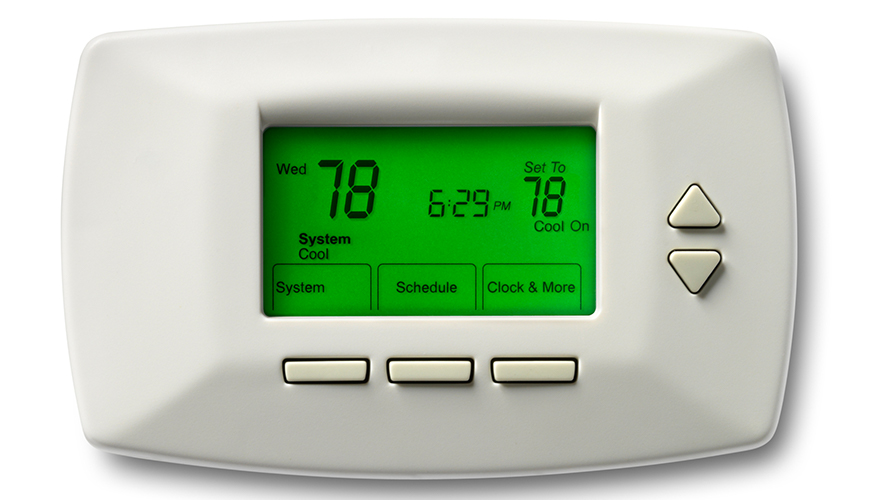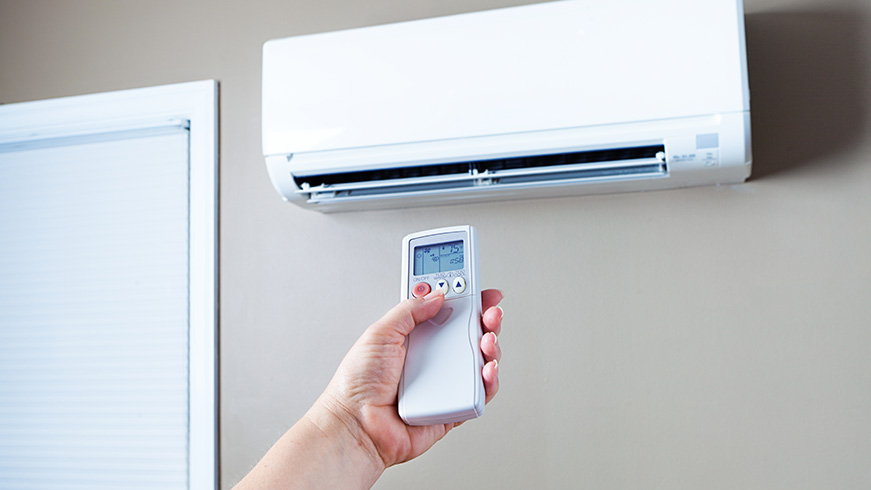Heating and cooling are essential not only to your comfort but also to your utility bill: the average household dedicates 48% of their electricity expenses to climate control. If you’re looking to save money on energy costs, learning how best to adjust your thermostat is a great place to start.
The most commonly cited figure for the perfect room temperature is 75 degrees. However, there are plenty of factors other than temperature that can affect how comfortable you are: the season, humidity, the clothes you’re wearing, and what type of activity you’re engaged in. Keep in mind that there isn’t one “perfect” temperature for your home because everyone has a different comfort level. It is definitely worth experimenting with your thermostat to find out what’s best for your own lifestyle because small changes in temperature can add up to big changes in energy savings.
In the Summer
We all love coming home to an icy blast of AC on a sweltering day, but it’s rarely worth it when you look at your electricity bill. In the summertime, for each degree that you set your thermostat above 72 degrees, you can save up to 3% on your utility bill. The closer your home is to the temperature outside, the better.
So how do you do this without sacrificing your comfort? Try gradually raising the temperature on your thermostat one degree at a time, and then let your body get accustomed to the change. Chances are you’ll be able to raise the temperature at least a few degrees without any noticeable discomfort. If you can, set your goal at 78 degrees: this is still cool enough to be a welcome relief from the summer heat, but it won’t overwork your air conditioning.
If you can tolerate even higher temperatures, go right ahead. You can save 6 – 8% on your electric bill for every degree your thermostat is raised above 78 degrees in the summer. If this is too toasty for comfort, you can keep the house cool while you’re home but save energy when you’re not there. While away from home for longer stretches of time (4 or more hours), consider letting the temperature rise all the way up to 88 degrees.
In the Winter
The same logic applies in the cooler months as well: the closer your interior temperature is to the exterior, the less money you’ll spend. If your thermostat is normally at 72 degrees, try gradually lowering it to 68 degrees. Studies have shown that there is little difference in most people’s comfort between these two temperatures, and every degree you lower your thermostat saves you 1 – 3% on your electric bill. Remember that clothes matter as well: a thick sweater is the equivalent of 4 degrees of added warmth, so it pays to bundle up!
Speaking of bundling up: if you have thick, cozy blankets, you can lower the thermostat 10 to 15 degrees while you sleep as well. If you keep the temperature low for 8 hours a day, you’ll be able to save 5 – 15% on your total electricity bill.
As an added benefit, cooler nighttime temperatures will help you in more ways than just lowering your utility bill: “cold sleeping” boosts your metabolism and helps you fall asleep faster as well.
Programmable Thermostats
A lot of this advice involves changing the temperature on your thermostat throughout the day. If you have a manual thermostat, though, this level of maintenance may feel like a hassle. One solution is to get a smart or programmable thermostat. You can create settings that automatically raise or lower the temperature at certain times of day, such as while you’re at work or while you’re asleep. With a programmable thermostat, you also won’t have that short period of discomfort while you wait for your thermostat to adjust to a comfortable temperature. Instead, you can program your HVAC system to kick in a little bit before you wake up or arrive home. That way, your house will be the perfect temperature when you get there.
We hope these tips will help you use your thermostat wisely no matter the season. Remember: comfort is key, but it doesn’t have to come at the expense of your utility bill.



